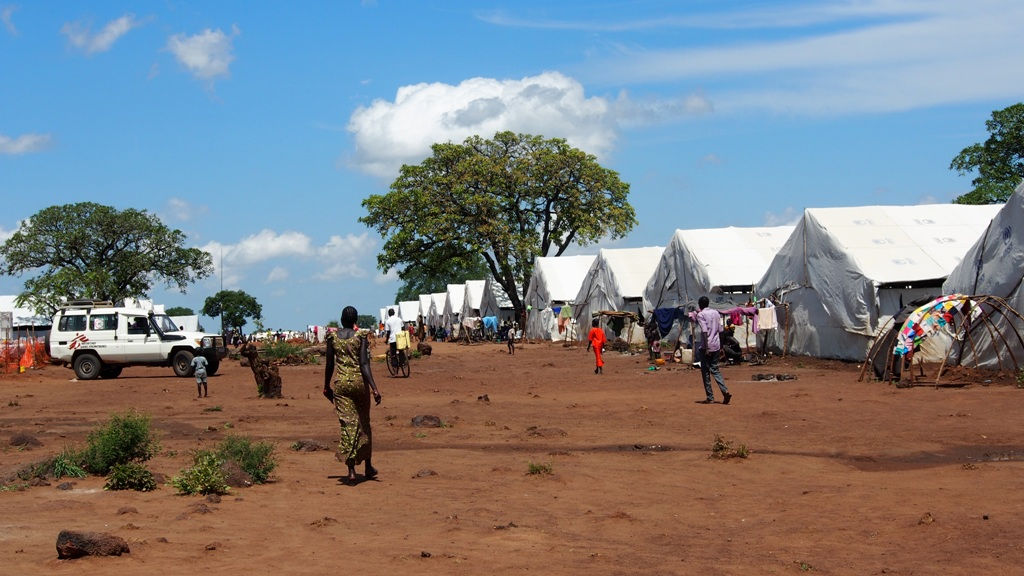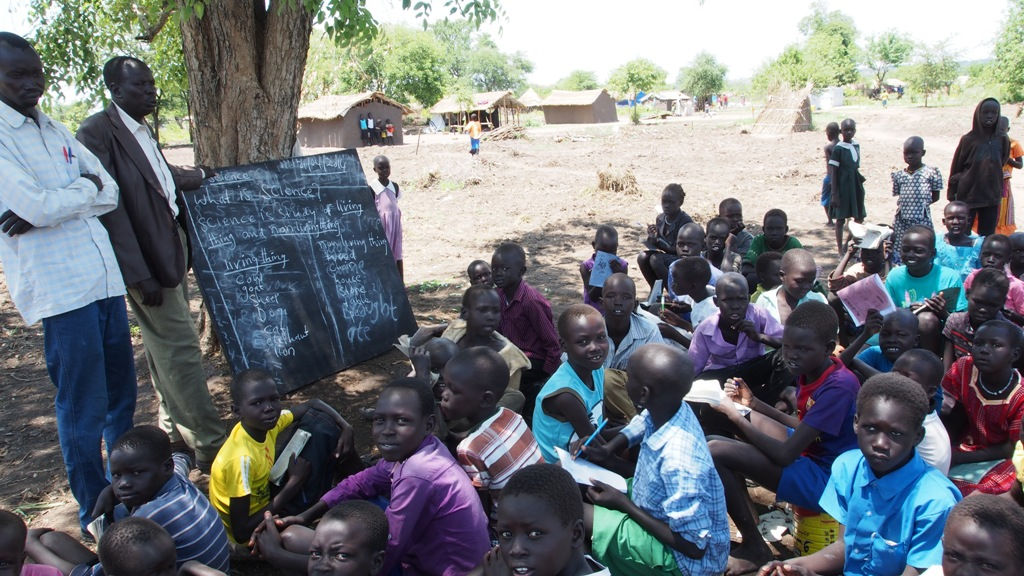According to the latest estimates of the United Nations High Commissioner for Refugees (UNHCR), the refugees from South Sudan in the northern province of Adjumani are more than 80,000, that is, 2/3 of the total number that is approaching 120,000. The refugees are mostly Dinka ethnicity, many of the province of Bor and Jonglei, arrive in Uganda through the border post of Nimule, the most easily traversable one for those fleeing the war.
Once in Uganda refugees are conducted in the field of first reception of Nyumanzi RC and after this initial phase, the refugees are assigned to one of fifteen camps of the province of Adjumani. Among these, the two largest ones are those of Nyumanzi RC
(Reception Center), which is home to around 10,000 people - the largest one in the province of Adjumani and probably all over the country - and Nyumanzi 1 with more than 20,000 people registered.
People in the camps live in conditions of great suffering, every day about 200 people from South Sudan arrive because of the violence being experienced by the region. In the first reception centre, which should contain 3000 people, there are more than 10,000 people. Overcrowding creates problems of all kinds, few toilets, inadequate kitchens, scarce water, overburdened health care, etc.
 On 21April, the two camps were visited by a group of the Community of Sant'Egidio in Adjumani along with a group from Rome. On 21April, the two camps were visited by a group of the Community of Sant'Egidio in Adjumani along with a group from Rome.
In Nyumanzi, from the beginning of the month, an elementary school was started thanks to our aid, the only one in that area of the field, which foresees the formation of nine classes. In the field, the population aged 5 to 11 is made up of over 6,000 children (more than a quarter of the total).
The life of the field during our visit seemed hectic. Many children received initial medical treatment, others cooked, there was a line to water and to self-organised shops.
During the visit, meetings were held with the heads of the fields (settlement chief) and school teachers that showed us the work already begun thanks to the aid of the Community in collaboration with the Diocese of Arua (blackboards, books, notebooks and other school supplies). For the moment the lessons are still taught under big trees but work is being done so that, in a month, the tents are ready to accommodate all the students.
 The meeting with the teachers was also an opportunity to better define the organizational and educational aspects, there was enthusiasm and desire to talk, to explain, and especially to have someone who would listen. Everyone had something to say, even those that were not directly involved in the birth of the school and wanted to explain in detail. They were impressed by the fact that someone from the city of the Pope had come to them and kept us thanking us for the closeness of us, Christians, like them, no matter the name. The meeting with the teachers was also an opportunity to better define the organizational and educational aspects, there was enthusiasm and desire to talk, to explain, and especially to have someone who would listen. Everyone had something to say, even those that were not directly involved in the birth of the school and wanted to explain in detail. They were impressed by the fact that someone from the city of the Pope had come to them and kept us thanking us for the closeness of us, Christians, like them, no matter the name.
At the end of the meeting there was a photo with the "teaching staff" and shortly after a delegation of women came.
They were happy that their children would finally be engaged in something important and useful.
Women, too, like everyone else, had many requests to do. The last one of Emanuel (15 years old) that, as we were about to leave, approached and said in good English "I like football . Can you help me to have a place here?".
Finally, before leaving, we took a walk around the field, very extensive and quite different from that of the first reception. Next to the huts of various sizes, sometimes covered with sheets of UNHCR, there are more structured spaces that are managed by the NGOs present (early childhood centres, for the protection of health, places of worship, etc.) often delimited by a fence and that, according to the teachers, could also be a reference for the school that will grow little by little. |

